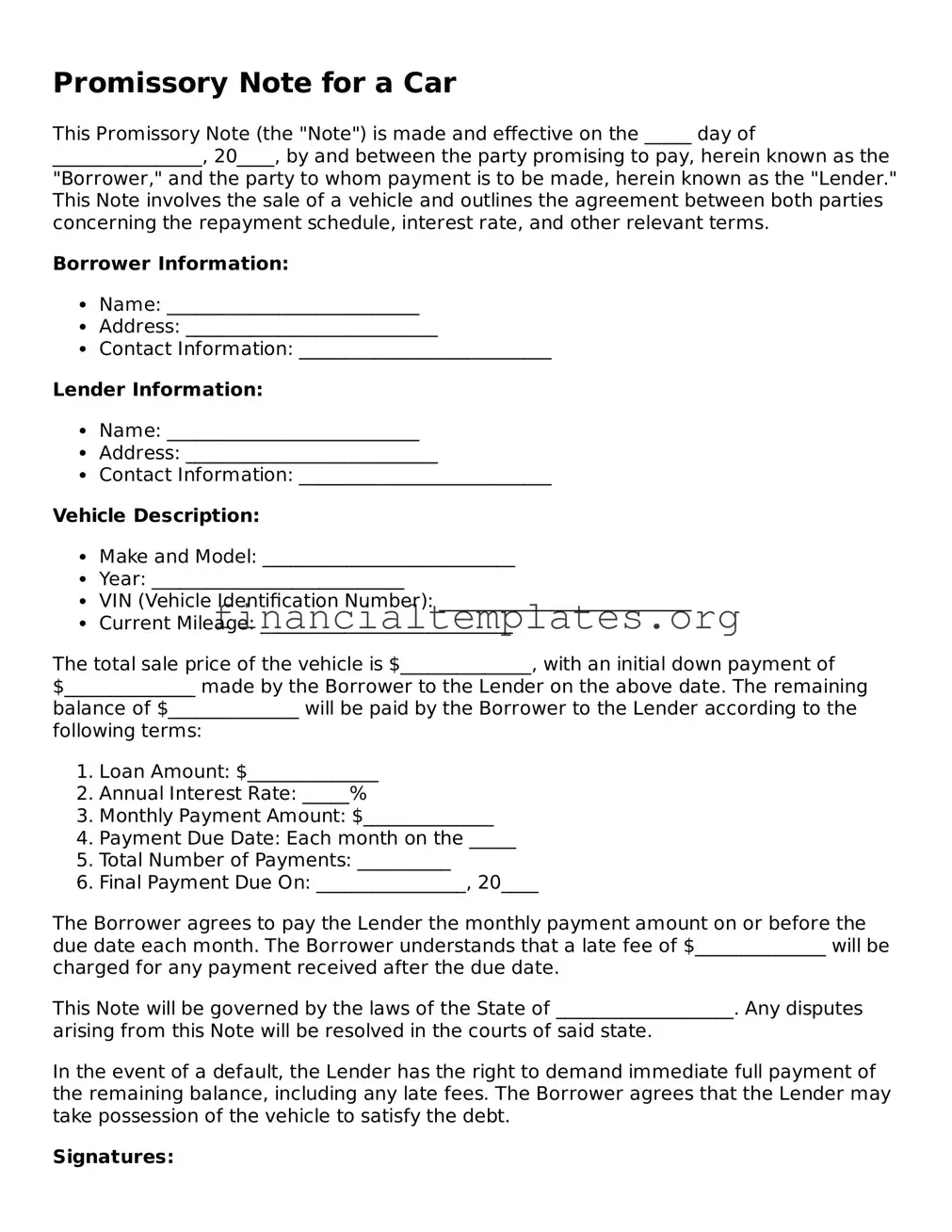A promissory note for a car is similar to a personal loan agreement, as both outline the terms under which money has been lent and needs to be repaid. These documents specify the amount borrowed, interest rate if applicable, repayment schedule, and what happens in the case of a default. The key difference is that a personal loan agreement can cover a range of purposes beyond just purchasing a vehicle.
It also bears resemblance to a mortgage agreement, albeit on a typically smaller scale and with a different type of asset as collateral. Like a mortgage, a promissory note for buying a car details the borrower's promise to repay the lent amount under agreed conditions, but it is secured against the car rather than real estate.
Similar in nature to a student loan agreement, a promissory note for a car sets forth the terms of repayment for borrowed funds. Both include specific details about the loan amount, interest rate, payment schedule, and consequences of failing to meet the agreed-upon terms. However, the purpose of borrowing and the collateral, if any, differ significantly.
Amortization schedules are closely related to promissory notes for cars, as both deal with the breakdown of loan payments over time. While the promissory note states the terms of the loan, the amortization schedule provides a detailed table of each payment, portioned into interest and principal, showing the balance decrease over the loan term.
Bills of Sale are often used in conjunction with promissory notes for cars. The bill of sale proves the transfer of ownership of the car from the seller to the buyer, while the promissory note details the buyer’s agreement to pay the seller a certain amount for the vehicle. Together, they ensure a legally binding sale and payment plan between the two parties.
Similar to a leasing agreement, promissory notes for cars outline payment terms for the use of an asset. However, leasing agreements usually pertain to renting assets rather than purchasing them. They detail the lease term, monthly payments, and use conditions, contrasting with promissory notes that focus on repayment terms for borrowed money to own an asset outright.
Guaranty agreements share common ground with promissory notes for cars, as they also involve promises regarding the payment of debt. A guaranty agreement involves a third party who guarantees to repay the debt if the original borrower fails to do so, adding an extra layer of security for the lender that is not typically detailed in a standard promissory note.
Finally, promissory notes for cars resemble loan modification agreements in that both can alter the terms of an existing financial agreement. While a loan modification agreement changes the terms of an existing loan due to the borrower's inability to meet the original terms, a promissory note may be revised if both lender and borrower agree to modify the repayment terms or balance owed.
